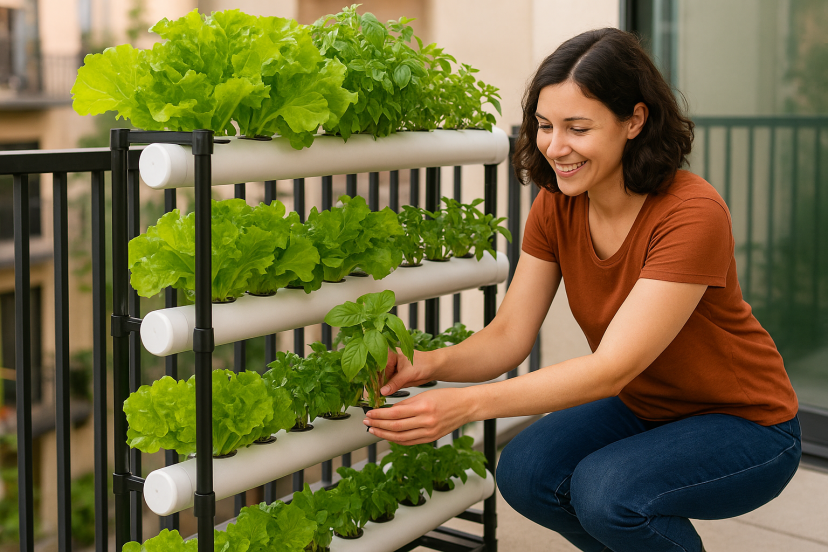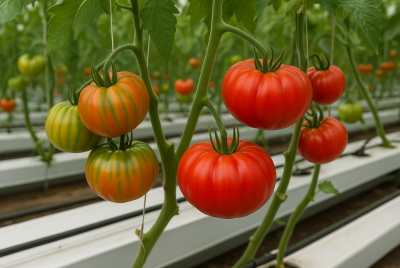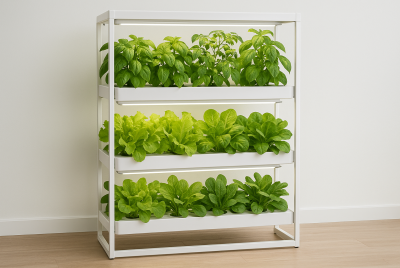Balcony Hydroponics: 5 Grow Rack Designs That Fit Small Spaces
We may earn a commission for purchases made using our links. Please see our disclosure for more details.
If you’re living in an apartment or urban setting, the dream of growing your own food can feel impossible—no backyard, limited sunlight, and barely enough space for a potted plant. That frustration only grows when you’re stuck buying wilted herbs or overpriced greens from the store. But here’s the good news: balcony hydroponics is making homegrown produce not only possible, but practical. By replacing soil with a nutrient-rich water system, you can grow vibrant, healthy plants right outside your window—even in the tiniest spaces. It’s a cleaner, faster, and more sustainable way to garden, no matter where you live.
What You Need Before Setting Up a Hydroponic Rack
Before picking your grow rack, take a moment to prepare your space and gather the basics. Here’s what you’ll need to succeed:
- Light source: Either natural sunlight (6–8 hours daily) or full-spectrum LED grow lights
- Hydroponic nutrient solution: These feed your plants since you’re skipping soil
- pH and EC meter: Helps you monitor water quality and nutrient uptake
- Growing containers: Net pots, rockwool cubes, or coco coir
- Water reservoir: A container to hold and recirculate your nutrient water
- Timer: Automate lights or water pumps
- Air pump (optional): Oxygenate the roots for healthier growth
Also, consider your balcony’s orientation (south-facing is best), the weight your floor can hold, and access to an electrical outlet if using powered components.
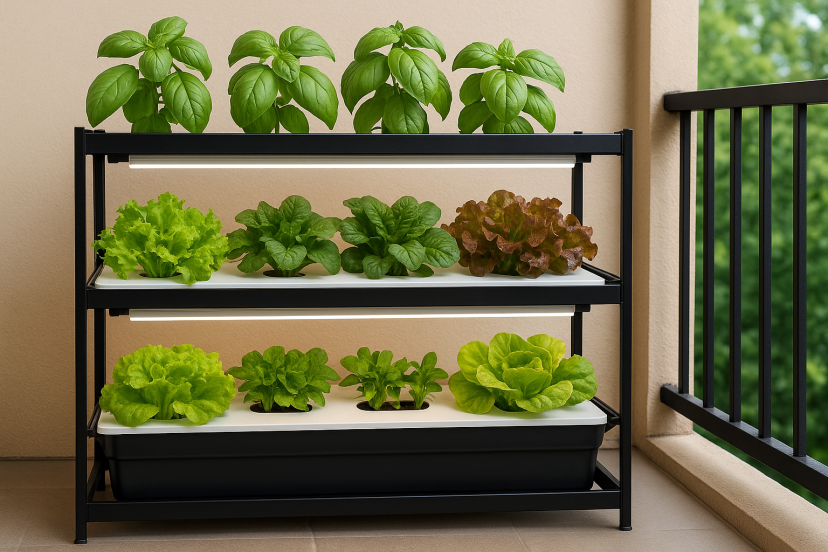
5 Space-Saving Grow Rack Designs to Try
1. Vertical PVC Pipe System
This classic design is one of the most DIY-friendly and efficient systems available. It utilizes vertical PVC pipes with drilled holes to support net pots. Water is pumped from a reservoir at the bottom and circulated through the pipes, nourishing the plant roots.
Why it’s great for balconies:
- Tall and narrow—perfect for tight spaces
- Modular—you can scale up or down easily
- Budget-friendly—PVC is cheap and accessible
This system suits leafy greens, herbs, and even strawberries with proper support. You can even grow compact fruiting plants like hydroponic cucumbers using this setup with the right support.
2. Stacked Tray Hydroponics Rack
Think of a vertical bookshelf, but instead of novels, it holds lush green produce. Stacked trays are supported by a metal or wooden frame, with each level containing plants in shallow water or a growing medium such as perlite or clay pebbles.
Key benefits:
- Each level can be independently managed
- Simple to harvest and replant
- Efficient use of vertical space
Stacked trays work well for microgreens, lettuce, and even dwarf tomato varieties. Just be sure there’s proper drainage and airflow between levels.
3. Hanging Gutter-Style Garden
Transform your balcony railing or wall into a practical green wall. Using horizontal gutters or rain troughs attached to supports or chains, you can create a multi-level hydroponic garden that looks as good as it functions.
Advantages:
- Minimal floor space required
- Easy access for harvesting herbs
- Great sunlight exposure if mounted properly
Connect the gutters to a central reservoir and use a small pump to keep water moving. This design is ideal for herbs like cilantro, mint, parsley, or even lettuce.
4. Multi-Tier Mesh Shelf with Net Pots
This design uses tiered metal or plastic shelving, with mesh racks to hold containers and allow easy drainage. By pairing it with a drip system, you can feed multiple levels with one pump and let gravity do the rest.
Best for:
- Leafy greens and compact vegetables
- Balconies with corner space or wall backing
- DIYers who want scalability
You can install wheels underneath for mobility or customize the number of tiers depending on your balcony height.
5. Foldable Bamboo Grow Rack with LED Lights
Prefer a sleek, eco-friendly look? Bamboo racks with built-in lights offer functionality and aesthetics. Many come with foldable designs for seasonal storage and tiered shelving to house seedlings or mature plants.
Why it shines:
- Blends well with modern decor
- Doesn’t rust like metal options
- Ideal for shady balconies
Look for models with energy-efficient LED grow lights that support various plant stages from germination to harvest.
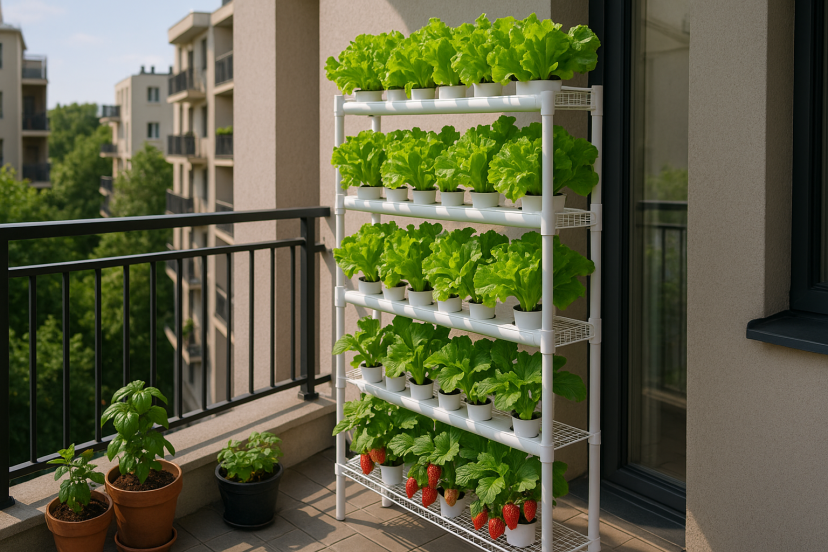
Top Hydroponic Tools and Products
Get started with confidence using these tried-and-tested hydroponic products:
iDOO Hydroponic Indoor Garden Kit – A compact, beginner-friendly option with 12 pods and built-in lights.
GE BR30 LED Grow Light Bulbs – Perfect for balconies with limited sun.
Lightweight Economy Net Pots – Reusable and durable, ideal for DIY systems.
General Hydroponics pH Control Kit – Helps maintain the correct pH for nutrient absorption.
Hydrofarm Active Aqua Submersible Pump – Quiet, reliable, and powerful enough for balcony-sized systems.
Note: Always check size compatibility with your setup before ordering.
Research Behind Balcony Hydroponics
Urban agriculture isn’t just a buzzword—it’s grounded in compelling scientific research. A comprehensive review on hydroponic crop production emphasizes how soil-free systems promote faster growth, higher yields, and better nutrient control—making them ideal for small urban spaces like balconies.
Additionally, a recent study on advancements in nutrient film technique (NFT) systems highlights their remarkable water efficiency and adaptability in compact, vertical gardening setups. Together, these findings validate balcony hydroponics as a smart, sustainable solution for modern city living—especially when space and resources are limited.
Final Thoughts
Balcony hydroponics proves that a small space doesn’t mean small potential. With the right system, your urban balcony can transform into a fresh food haven. These five grow rack designs aren’t just efficient—they’re customizable to your lifestyle and aesthetics.
Whether you’re a weekend plant hobbyist or an urban homesteader, this method opens doors to sustainable living, better nutrition, and a deeply rewarding connection to your food.
Go ahead—build your rack, fill it with greens, and let your balcony garden flourish.
FAQs
1. What’s the easiest hydroponic system for beginners?
The Kratky method is a great no-electricity option for beginners. Otherwise, vertical PVC or stacked trays are easy to manage with minimal gear.
2. How many times should the nutrient solution be replaced?
Most balcony hydroponics systems require a full change every two to three weeks. Always top up with fresh water and check pH weekly.
3. Can I grow peppers or tomatoes or other fruiting plants?
Yes, but you’ll need larger containers, stronger support structures, and more intense lighting. Start small and scale gradually.
4. Are hydroponic plants as nutritious as soil-grown ones?
Absolutely. In fact, hydroponics often delivers more consistent nutrients to plants, resulting in equal or better nutrient density.
5. What do I do in winter?
Make the switch to LED grow lights for indoor settings. Many balcony systems can be moved or folded and used indoors seasonally.

